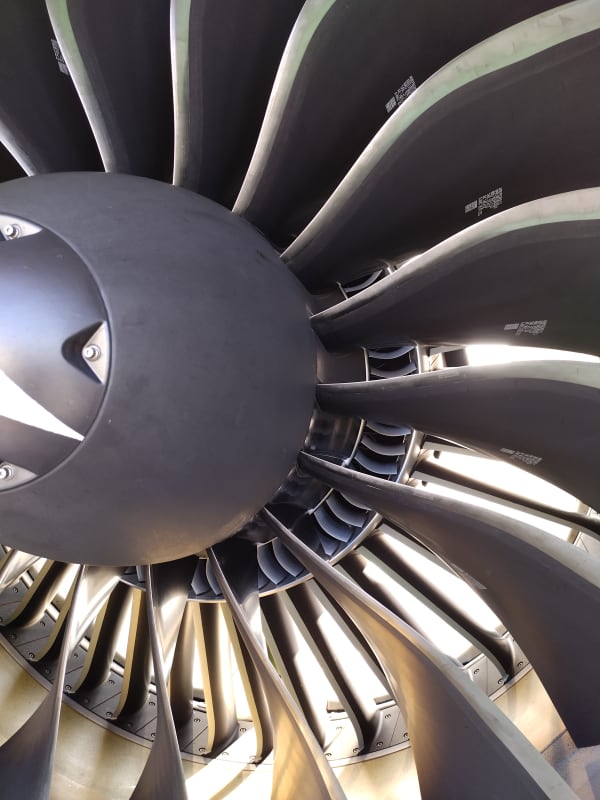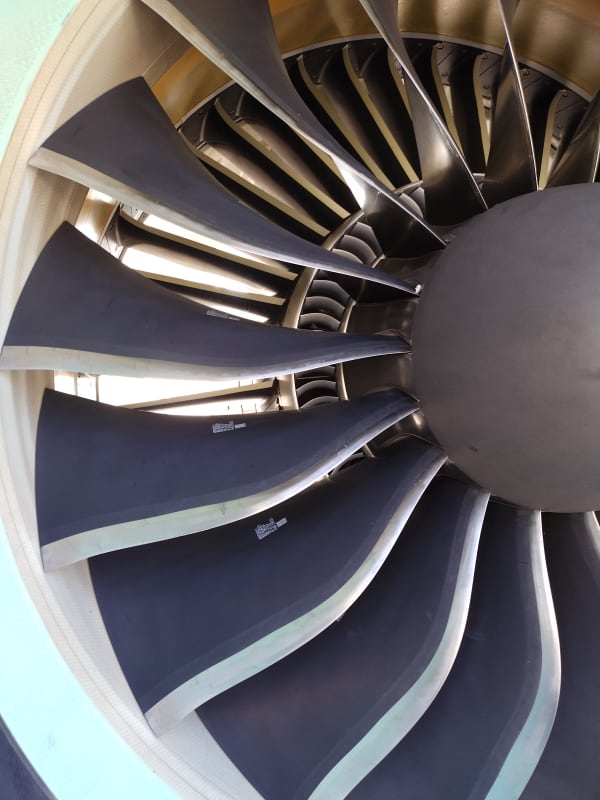Einstein gave the same test to students every year. When asked why he would do something like that, "Because the answers had changed."
Navigation
Install the app
How to install the app on iOS
Follow along with the video below to see how to install our site as a web app on your home screen.
Note: This feature may not be available in some browsers.
More options
Style variation
-
Congratulations cowski on being selected by the Eng-Tips community for having the most helpful posts in the forums last week. Way to Go!
You are using an out of date browser. It may not display this or other websites correctly.
You should upgrade or use an alternative browser.
You should upgrade or use an alternative browser.
Sucked into turbine 3
- Thread starter 1503-44
- Start date
- Status
- Not open for further replies.
Alistair said:The whole aircraft now is a bio hazard.
I hadn't even considered that. This is a bit gruesome but what would the 'output' be? Mist? Or would most of the 'material' remain intact in the engine? Or would the 'material' be completely disintegrated?
Alistair_Heaton
Mechanical
I am really not comfortable describing what would happen in public. To be honest I wouldn't be discussing it with young colleagues either and only a select few older ones and they fly the things. Sorry
TugboatEng
Marine/Ocean
Let's just say that the aircraft ventilation is supplied by the unfortunately named compressor bleed air from the engine. Hopefully things that are ingested by the engine get centrifuged outwards by the fan and end up in the bypass duct versus entering the compressor stages of the engine.
Alistair_Heaton
Mechanical
Correct, most of it does go down the bypass, Not all of it. A 0.5kg bird enough of it gets through for you to smell and taste it. And if you can smell and taste it.....
At least the engine went into auto shut down and will have been on the HP bleed. So hopefully I am wrong and it got stopped before the aircycle machine. The auto shut down will have closed the HP bleed valve and shut other things down but I hope it won't be just swap the pod and fly it again.
At least the engine went into auto shut down and will have been on the HP bleed. So hopefully I am wrong and it got stopped before the aircycle machine. The auto shut down will have closed the HP bleed valve and shut other things down but I hope it won't be just swap the pod and fly it again.
Alistair_Heaton
Mechanical
Its flying again so I am probably wrong I hope. Although pod swap is 2 hours and a bleed system and sterilisation run on the ventilation takes about 4 hours. Which I didn't know they did pre covid. Deep clean 2 hours. So not surprising its flying again
TugboatEng
Marine/Ocean
I don't want to be graphic but all of our perception of turbine engine is frozen chickens fired at hundreds of miles per hour into the fans. I think this death is much more horrific and painful. This person most likely got rolled around in the fan stage and experienced an extremely painful end.
This accident bothers me because I look to the aviation industry for better practices. My industry has experienced similar accidents involving tow wires.
This accident bothers me because I look to the aviation industry for better practices. My industry has experienced similar accidents involving tow wires.
Alistair_Heaton
Mechanical
As others have pointed out that airport markings are not normal.
I suspect it will be one of many differences to normal.
The NTSB will just state fact's about the situation.
I wouldn't be surprised if the buckets of paint have been already taken out.
To be honest the baggage belt is more alarming to me. Reminds me of the workshop safety videos we got shown in the practical experience at uni. Ties taking faces into lathe's, wedding rings being welded etc
I suspect it will be one of many differences to normal.
The NTSB will just state fact's about the situation.
I wouldn't be surprised if the buckets of paint have been already taken out.
To be honest the baggage belt is more alarming to me. Reminds me of the workshop safety videos we got shown in the practical experience at uni. Ties taking faces into lathe's, wedding rings being welded etc
Alistair_Heaton
Mechanical
Seems another one occurred not that far away.
Not a ground handler but maint.
They say these sort of things happen in threes.
On a side note apron markings in the latest one look normal in the picture.
Not a ground handler but maint.
Me said:And you really don't want to be anywhere near the technicians when they are doing engine runs with the cowls up. They crawl all over the things while running and sometimes quiet high power settings. I can't watch and utterly hate being in the cockpit while they are doing it. Thankfully in my current company Pilots are banned from being used for technical engine runs.
They say these sort of things happen in threes.
On a side note apron markings in the latest one look normal in the picture.
georgeverghese
Chemical
And yet another fatal incident at San Antonio, this time with an Airbus - June 24th 10:30pm
Article on the San Antonio incident:
TugboatEng
Marine/Ocean
I would be curious to see toxicology on both of these incidents.
Alistair_Heaton
Mechanical
Tug I have put in 2 safety reports in the last 5 days on breaches of the stand protected area while engines turning and beacons on. In Europe most countries now you have to be breathalysed when reporting for duty in aviation. This isn't in some second world European country. And the excuse given was "we are being efficient"
I can't really envisage how some one can get ingested while taxing. Coming onto stand yes. On single engine if you don't have enough kinetic energy for the last couple of meters you have to give it quite a bit of thrust to get it moving again on one engine.
Which takes the suction danger area from 2.5 meters at idle up to 6 meters. And the stand boundary I think is at 2 meters from max stand wing tip. The A319 though is quite a short aircraft so with the nose wheel on the parking line it may well be less than 6 meters until the boundary.
To note the distances are for the engines on the A220 they are likely different for the A319.
I can't really envisage how some one can get ingested while taxing. Coming onto stand yes. On single engine if you don't have enough kinetic energy for the last couple of meters you have to give it quite a bit of thrust to get it moving again on one engine.
Which takes the suction danger area from 2.5 meters at idle up to 6 meters. And the stand boundary I think is at 2 meters from max stand wing tip. The A319 though is quite a short aircraft so with the nose wheel on the parking line it may well be less than 6 meters until the boundary.
To note the distances are for the engines on the A220 they are likely different for the A319.
TugboatEng
Marine/Ocean
That is no the case at USA airports and SEIU will likely not allow any investigation to be carried out or will keep the findings secret.
Alistair_Heaton
Mechanical
If anyone is interested here is the fan and core intake of a geared jet engine on the a220


The small variable vanes on the ring round the hub are the intake into the compressor


The small variable vanes on the ring round the hub are the intake into the compressor
TugboatEng
Marine/Ocean
I read earlier today that 10% of the geared engines are grounded. I wonder if FOD is a significant factor in that number?
-
1
- #77
SWComposites
Aerospace
No, issues are excessive wear and lack of overhaul capacity and spare engines.
TugboatEng
Marine/Ocean
Sorry, dark joke. I am also acutely aware of supply chain related downtime. That problem has not been improving.
Alistair_Heaton
Mechanical
I was hoping that some that has a clue would post on the geared engine issues.I really have no clue apart from various plays they are making us do to try and extend the time on wing. Some of them I really don't understand but I don't need to. It is an immature design currently with a few major redesign mods due in the next 12 months which aren't software tweaks.
It is an extremely good engine to be honest for a pilot... Fuel economy its good for an airline. Time on wing is an huge issue at the moment.
It is an extremely good engine to be honest for a pilot... Fuel economy its good for an airline. Time on wing is an huge issue at the moment.
- Status
- Not open for further replies.
Similar threads
- Replies
- 6
- Views
- 5K
- Replies
- 35
- Views
- 13K
- Question
- Replies
- 39
- Views
- 21K
- Replies
- 2
- Views
- 397
- Locked
- Question
- Replies
- 12
- Views
- 743

![[ponder] [ponder] [ponder]](/data/assets/smilies/ponder.gif)